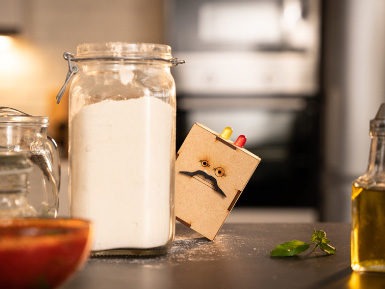
Overview
This Dust Sensor gives a good indication of the air quality in an environment by measuring the dust concentration. The Particulate Matter level (PM level) in the air is measured by counting the Low Pulse Occupancy time (LPO time) in given time unit. LPO time is proportional to PM concentration.
This sensor can provide reliable data for air purifier systems; it is responsive to PM of diameter 1μm.
Note: This sensor uses counting method to measure dust concentration, not weighing method, and the unit is pcs/L or pcs/0.01cf.
Tech specs
|
Item |
Norm |
Unit |
|
VCC |
4.75~5.75 |
V |
|
Standby Current Supply |
90 |
mA |
|
Detectable range of concentration |
0~28,000 / 0 ~ 8000 |
pcs/liter / pcs/0.01cf |
|
Operating Temperature Range |
0~45 |
°C |
|
Output Method |
Negative Logic, Digital output, High: over 4.0V(Rev.2), Low: under 0.7V |
- |
|
Detecting the particle diameter |
>1 |
μm |
|
Dimensions |
59(W) × 45(H) × 22(D) |
mm |
|
Humidity Range |
95% rh or less |
- |
Pinmaping
|
Arduino UNO |
Dust Sensor Pin |
Cable Color |
|
5V |
Pin 3 |
Red wire |
|
GND |
Pin 1 |
Black wire |
|
D8 |
Pin 4 |
Yellow wire |
Get Inspired

Display real-time meeting room availability, synchronized with Google Calendar through Arduino IoT Cloud.

We’re excited to announce the launch of the new Arduino IoT Bundle. This is built to help you dive into the complex and fascinating world of the Internet of Things with even more confidence and possibility — giving you the hardware, software, and components you need to create your own connected IoT projects. So how does it all work? Let’s find out more. What is the Arduino IoT Bundle? Getting started with the IoT can be a daunting process. It requires a certain set of tools and a level of knowledge to take those first steps, but building your own connected IoT devices can be an incredibly rewarding process once you figure out the basics. The Arduino IoT Bundle is designed to bring together all the tools and knowledge you’ll need to get started with your first connected IoT devices. It’s built around the Arduino Nano RP2040 Connect, and the bundle also contains electronic components and a series of step-by-step tutorials to help you get started quickly and confidently. How it works — some examples The IoT is an incredibly rich area when it comes to building your own connected projects. There are a ton of exciting opportunities here that don’t require an enormous amount of knowledge or resources to get started with. Let’s take a look at some examples of IoT projects, you’ll find more in the bundle: Pavlov’s Cat Training a cat is a tricky business, as any feline owner will know all too well. However, you can now use technology to make this task easier, using an IoT-enabled device you build at home to keep your cats in line. This project — using only components found in the Arduino IoT Bundle and some cardboard — allows you to build a device that plays a certain melody whenever it dispenses food for your cat. At other times, it will play a different tune and your furry friend gets nothing. Just like Pavlov and his famous dogs, you’ll be able to train your cat to associate certain sounds with a reward






